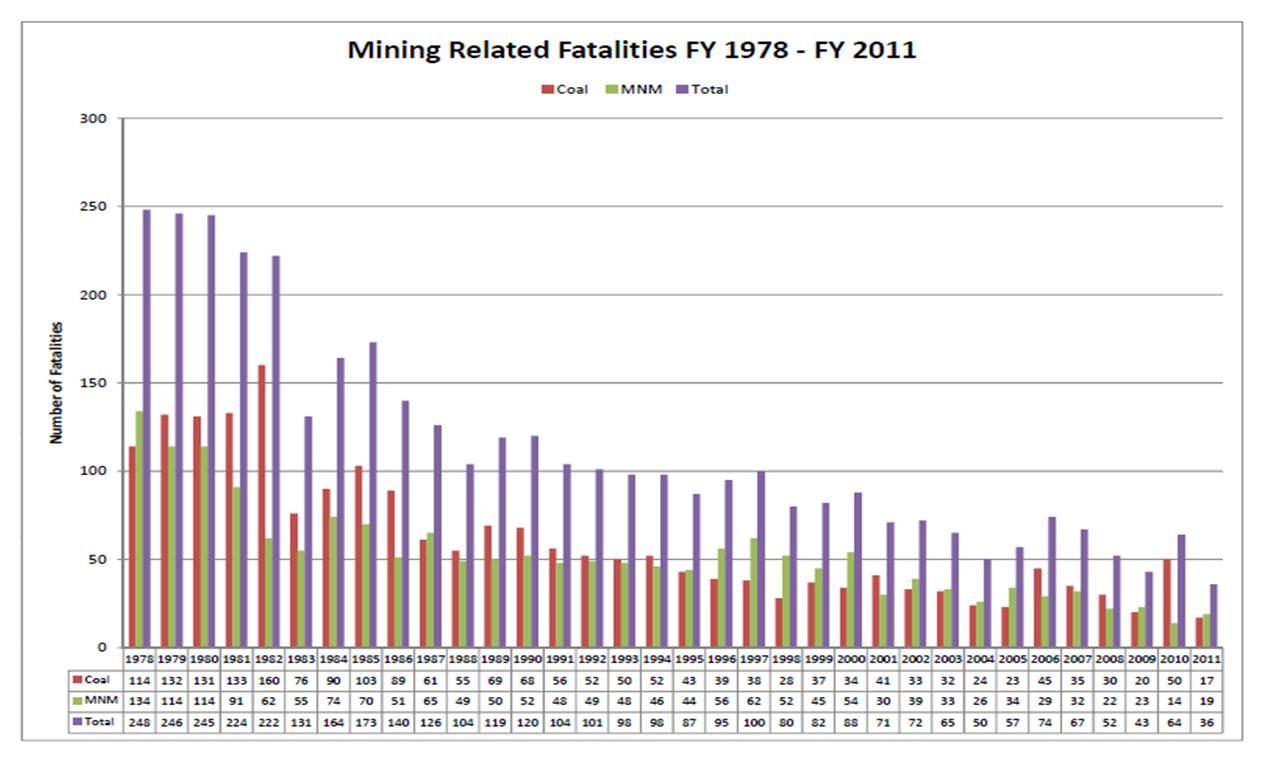Since I arrived at the Mine Safety and Health Administration, my top priority has been to reduce fatalities, injuries and illnesses in our nation’s mines. Last year at this time, we reported that mining fatality and injury rates were the lowest ever in history. Preliminary data for 2012 show that 36 miners (19 in coal and 17 in metal/nonmetal mining) died in work-related accidents. While one death is still one too many, we are continuing to move mine safety in the right direction with fatality rates for all mining reaching an all-time low for the second straight year.
If the current figures hold, more miners than ever went home to their families and friends safe and healthy at the end of their shifts last year. We know it has taken the efforts of all of us in the mining industry to reach these milestones. But while we acknowledge these historic lows, we understand that more action is needed by the entire mining community to prevent mining injuries, illnesses and deaths.
When the Federal Mine Safety and Health Act of 1977 passed, 273 miners died that same year. Since that time, fatality numbers have steadily declined. In order to prevent mine deaths, we know there are some essential things that operators must have in place:
• Effective safety and health management programs that are constantly evaluated.
• Find-and-fix programs to identify and eliminate mine hazards.
• Training for all mining personnel.
We’ve posted an in-depth analysis of 2012’s mining deaths on our website along with best practices to help mining operations, miners and contractors avoid fatalities, as well as for trainers to include in miner training. Much more information on preventing mine injuries, illnesses and deaths is available as well.
At MSHA, we’ve also undertaken a number of measures to prevent mining deaths, injuries and illnesses:
• Increased surveillance and strategic enforcement through impact inspections at mines with troubling compliance histories.
• Enhanced pattern of violations actions; special initiatives such as “Rules to Live By,” which focuses attention on the most common causes of mining deaths.
• And outreach efforts such as “Safety Pro in a Box,” which provides guidance to the metal/nonmetal mining industry on best practices and compliance responsibilities.
MSHA also has issued two new final regulations that will contribute to reduced injuries and deaths in mining. The final rule for Examinations of Work Areas in Underground Coal Mines for Violations of Mandatory Health or Safety Standards became effective in August 2012. It enhances miners’ health and safety by requiring coal mine operators to identify and correct hazardous conditions and violations of nine health and safety standards that pose the greatest risk to miners, including the kinds of conditions that led to the explosion at the Upper Big Branch Mine. The recent final rule on Pattern of Violations will go into effect on March 25 and will simplify the existing POV criteria, improve consistency in applying the POV criteria and more effectively achieve the statutory intent. It also will encourage chronic violators to comply with the Mine Act and MSHA’s safety and health standards.
It takes all of us in the mining community, working together, to improve health and safety. Already, actions by many in the mining industry have contributed to overall improvements. Our nation’s miners deserve nothing less than our continued commitment.
Joseph Main is the assistant secretary of labor for mine safety and health.

